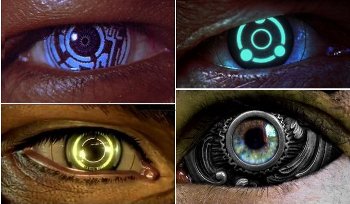Cybernetics
Cybernetics can be simply stated as the replacement of body parts with technological simulacra.
But it goes beyond that. Cybernetic replacements can be equipped with additional capabilities, joints, movements and accessories that the original body parts did not possess. To take advantage of these additions and changes, brain and central nervous system implants are required. The malleability of the brain enables it to accomodate changes and incorporate new capabilities in surprisingly little time. Unfortunately, there is only so much strain the brain and nervous system can adapt to before it becomes overtaxed. How much differs with every recipient and with every installation.
Utility
The Coalition States have established codified standards for cybernetic enhancements. These standards establish in-depth restrictions on the impact the enhancements can have upon the host body. For example, there is a limit to how strong a prosthetic arm can be depending on the material of the skeletal structure to which it attaches; and limits to the electromagnetic interference the systems can cause to the surrounding nervous system and other cybernetics. These standards are extensive and viewed positively by all legitimate cyber-docs. They also include what is and is not restricted to particular occupations and permit holders. Certain industrial and hazardous duty environments require specialized systems, for instance, and militarized bionics and some black-hat cybernetics are reserved for the military and other official coalition personnel only.
There are back alley cyber-docs who are willing to circumvent these codes, however; for a price. They will Install illegal cybernetics and bionics along with providing falsified authorizations to fool audits and inspections.
Nearly every cyber-doc in North America uses the coalition codified Standards for Cybernetics And Bionics (CC-SCAB, or just Scab) as the accepted standards for the industry. It is written in Technocan.
Manufacturing
The two aspects of cybernetics are the Biological Interface and the Prosthetic System. Each requires vastly different core competencies and facilities.
Manufacturing the biological interface is something that requires the highest levels of science and technological capabilities. These interface systems are therefore unsurprisingly only available in the Coalition States, Republic of Ishpeming, and Manistique Imperium. Cyberdocs who install cybernetics anywhere else in North America must have gotten their interfaces either from one of these manufacturers or they've recycled used interfaces from people who are no longer using theirs. As one would suspect, there is a black market for "used" cybernetics.
Unlike the biological interfaces, anyone with a smattering of electro-mechanical systems knowledge can manufacture the prosthetic systems. There are a number of niche and artisan manufacturers of cybernetics and custom bionics scattered throughout North America as well as some high volume low quality manufacturers as well.
Access & Availability
Cybernetic enhancements in Rift's Earth are commonplace. They are not cheap, but the technology is readily available in most urban areas and the demand keeps the number of skilled practitioners abundant.
Almost all mercenaries, soldiers and heavy laborers have obtained some level of cybernetic augmentation.
Some even opt for full body conversion, keeping only their brain and central nervous system and replacing everything else.
Most well equipped militaries, including the Coalition, will subsidize or even mandate some cybernetic enhancements of its soldiers.
Complexity
Cybernetics and it's less subtle sibling bionics are comprised of two core systems. The first is the human interface. It translates neural impulses from the host body into instructions for the prosthetic. The second is the prosthetic itself. This takes those instructions and turns them into action.
Most cybernetics are small-scale implants, augmentations and enbhancements such as improved hearing or smell and enhanced optics; while memory upgrades, thought-to-code compilers (TCC), and smuggler storage are also popular. Prosthetic limbs for cosmetic or medical reasons would also be considered cybernetics.
The term bionics is typically reserved for more industrial-grade, hazardous-duty, or military-use enhancements. Bionics typically make no attempt at concealing their existence and invariably have more features than the original body.
Discovery
In the early 2000's, Dr Andrew Schwartz, who is based at the University of Pittsburgh School of Medicine, was able to hook up a robotic arm to the brain of a lab monkey. With probes inserted into the monkeys' motor cortices, he used computer software to interpret the brain's electrical impulses and translate them into movement through the robotic arm. The monkey was able to learn to move the arm through thought alone and was soon able to use it to feed itself.
This program grew in scope and funding, becoming world renown as Motorlab, where they took neural prosthetics and even A.I control systems even further until they reached the limit of the robots design capabilities they had in-house.
Then they partnered with Boston Dynamics who designed and built the most advanced dynamic robot systems on the planet at the time. Together, they achieved prosthetic and body replacement systems that could not just reach the dynamic response levels the recipients needed, but could far exceed them.
The custom cybernetics industry was born.



Comments